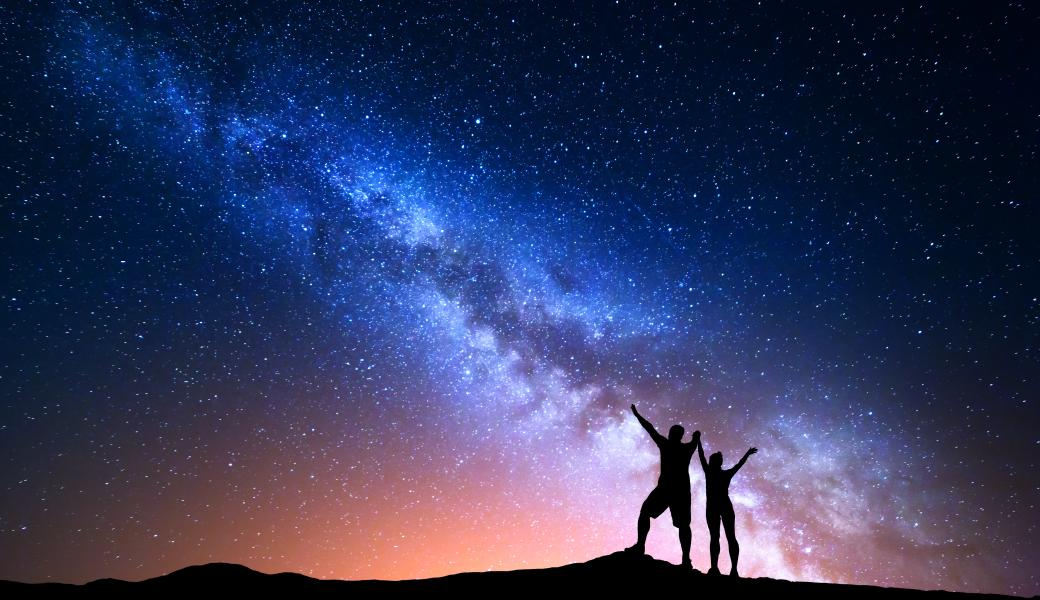AARP: 7 Dark Sky National Parks Fantastic For Stargazing

Can’t afford to join a commercial space mission offered by Jeff Bezos or Richard Branson? Consider the next best thing: seeing a starry, starry night in a sea of darkness, unimpeded by artificial light, at one of the International Dark Sky Parks in the U.S. It’s a rare treat, since light pollution prevents nearly 80 percent of Americans from seeing the Milky Way from their homes.
The International Dark-Sky Association (IDSA) has certified 14 of the nation’s 63 national parks as dark sky destinations. So visitors can take full advantage of such visibility, many of them offer specialized after-dark programs, from astronomy festivals and ranger-led full-moon walks to star parties and astrophotography workshops. If you prefer to stargaze on your own at a park, the National Park Service recommends bringing a pair of 7-by-50 binoculars, a red flashlight, which enhances night vision, and a star chart, which shows the arrangement of stars in the sky.
Here are seven of the IDSA-certified parks where you can appreciate how the heavens looked from the Earth before the dawn of electric light.
Arches National Park (Utah)
If there’s one state stargazers should be sure not to miss, it’s Utah, which boasts the country’s greatest number of certified dark sky national parks, with five: Arches, Bryce, Canyonlands, Capitol Reef and Zion. Arches stands out with more than 2,000 signature sandstone arches that form dramatic backdrops for the celestial show overhead. For the best viewing spots, avoid the lights of Moab to the south and head north to the Balanced Rock picnic area, the Garden of Eden viewpoint, Panorama Point and the Windows section. Under the right conditions, you might even see Saturn’s rings with standard binoculars. Ranger-led stargazing programs, during which rangers introduce visitors to the wonders of the night sky followed by stargazing and telescope viewing, take place in spring and fall around the new moon at Panorama Point or the park’s visitor center. These events rotate between Arches and nearby Canyonlands.
Big Bend National Park (Texas)
Thanks to its remote desert location and low humidity, this sprawling park in southwestern Texas has the least light pollution of any other national park in the continental U.S. No wonder, as the song says, “The stars at night are big and bright, deep in the heart of Texas.” You can attend one of Big Bend’s star parties, when amateur astronomers gather to observe the night sky together; take a guided moonlight walk; or use your binoculars on your own to enjoy an evening of meteor showers, constellation spotting or Milky Way viewing. On a clear night, countless stars will dazzle you, including from the Andromeda Galaxy, 2.5 million light years away.
Bryce Canyon National Park (Utah)
Marry the world’s largest collection of hoodoos (irregular columns of rocks) with one of the country’s darkest night skies and you have pure magic. At Bryce you can watch the Milky Way slash a silvery arc across the sky while thousands of stars illumine the park’s otherworldly rock formations. Stargazing is serious business here. Park rangers and volunteer astronomers operate about 100 astronomy programs per year. They include constellation tours, when rangers with lasers point out constellations visible in the night sky, and one- to two-mile-long full moon hikes, when the interplay of shadows and moonlight lend the hoodoos an eerie glow. For an overdose of celestial majesty, plan your trip around the four-day Annual Astronomy Festival in late June and participate in a collective astronomy art project, which entails creating watercolor paintings of planets in our solar system and an astronomical art “masterpiece” to unveil on the last day of the festival.
Read the full article from AARP here.
Please Sign in to View
Log in to view member-only content.
If you believe you are receiving this message in error contact us at memberservices@rvia.org.
